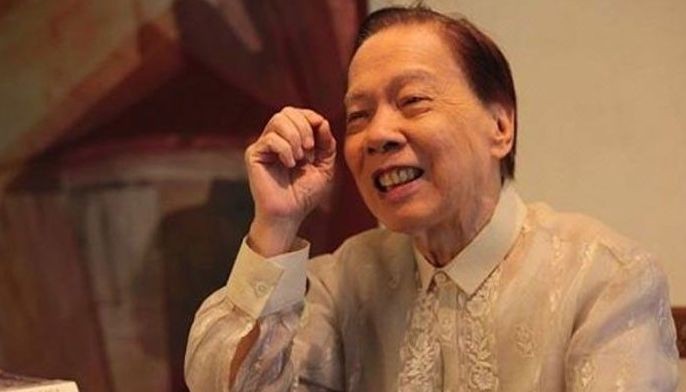Women between covers
September 26, 2005 | 12:00am
 Don’t look askance at those weekly or monthly women’s magazines that crowd the newsstands of your favorite bookstore.
Don’t look askance at those weekly or monthly women’s magazines that crowd the newsstands of your favorite bookstore.
Sure, you want to be seen as reading only Vanity Fair or The Far Eastern Economic Review or Architectural Digest, but don’t tell us you don’t peek at those mags when they trumpet from their covers (usually adorned with photos of celebrities at their glamorous and sexiest best) such titles as "How To Get Him to Do What You Want" or "What Is the Switch that Turns Her On?" or "Will Zsa Zsa and Dolphy Ever Tie the Knot?" or "Charles and Camilla – Do You Approve?"
Sure, there’s such a thing as snob value or image building, projected as much by which magazines you are perceived as regularly reading as by the designer clothes you may (or may not) wear. But those supposedly low-brow women’s magazines serve a deeper purpose than entertainment or edification of women, the purported rationale behind their existence through the years. In other words, a wary student of his/her socio-cultural milieu would be wise to treat with respect these popular (populist?) publications (and their readers).
It takes an observant journalist-cum-social scientist like Dr. Georgina Reyes Encanto, former dean of the College of Mass Communication and professor of Journalism at the University of the Philippines, to discern this fact. Encanto, who holds an AB magna cum laude degree from UP and an MA from Brandeis University, Massachusetts, plus a PhD in Philippine Studies from UP, has written what is hailed as "the first book of its kind in that it is written from a feminist perspective." It is an aspect absent or glossed-over in past studies of women’s magazines as a journalism genre in the Philippines, according to Luis V. Teodoro (editor, Philippine Journalism Review, and columnist, Today).
Encanto introduces her work as an "academic study," attributing her inspiration for writing it to her late mother, UP Prof. Erlinda Alcantara-Reyes, who avidly collected and read magazines. She acknowledges it to be "an initial attempt (perhaps opening the way for future studies?) to account for women’s magazines as powerful vehicles for whoever is the ruling class to perpetuate their ideology and to incorporate women into the prevailing social order." And further, to show how magazines "colluded with other ideological apparatuses such as the family, the Church, and the educational system to mold the thinking, outlook and way of perceiving the world, including the social relations and self-images, of generations of Filipinos."
In support of such contentions, Encanto introduces us to what she describes as two "more progressive and more optimistic interpretations of ideology and popular culture," as the framework on which she bases her work. One is Gramsci’s theory of hegemony, referring to a society which accommodates both pro and anti sides (acceptance and resistance). The other is Althusser’s theory of ideological state apparatuses (ISAs), i.e. the family, the Church, the educational system, the legal system, media and the arts, as upholding and reaffirming the dominant economic system.
Within this hegemony-ideology framework, Encanto proceeds to analyze how patriarchy and capitalism have persisted as the ideology/economic system dominating Filipino women to the extent that the women, the subjugated class, wittingly or unwittingly actually collude in their subjugation. Popular culture – yes, Virginia, those low-brow women’s magazines – is the modus operandi for achieving this goal. Magazines are indeed the perfect weapon, because they are hegemonic – being arenas for domination or resistance – and they feature a constant battle for expressing the dominant ideology as well as for questioning or challenging it.
Encanto divides this seminal history of women’s publications into five periods: the Spanish Colonial Period (1891-1898); the American Period (1898-1945); the Postwar Years (1945-1971); the Martial Law Years (1972-1986); and the present (1986 to 2002), the better to gain an overview of the whole panorama. (After all, how squeeze 114 years of magazine culture into 109 pages of a book?)
Disposing thus of any persisting or prevalent perception of magazines as merely innocuous forms of entertainment and "escapist" fare, Encanto now proceeds to prove how magazines from their first appearance on the Philippine scene have either been or not been instruments of social change. Readers will find this latter half of the book undoubtedly more interesting than the first, because now Encanto talks about familiar things, familiar pages, familiar people – from angles we might not have previously considered or thought significant.
In fast-paced journalistic style, Encanto paints well-researched pictures of each stage of magazine history, putting life and color into what could have been dry pages on which the dust of the past has been sifted. But lo and behold, hard to believe, the book is actually hard to put down once you reach this part.
And so (Encanto tells us), women’s magazines first appeared in the last quarters of the 19th century, which is to say, during the last years of the Spanish colonial period. Published/edited/written in Spanish by members of the ilustrado class, their readers could only be fellow-ilustrados, and their purpose, whether witting or not, was to reinforce the dominant patriarchal – if medieval – ideology which sustained the prevailing feudalistic, colonial set-up in the Philippines and which constituted their own cultural background.
Being the main entertainment fare of the ilustrada, these early publications greatly influenced her worldview and her understanding of her social role (as mother and nurturer, excluded from public life and politics). They were weapons, in other words, for winning women’s unwitting consent to their own subjugation.
Even then, however, the contradictions that existed in society at the time were mirrored in the editorial contents and advertisements of magazines. Although magazines were supposed to address women’s specific concerns and interests – and even published articles on science, history, etc., for their erudition and education – these publications had a marked male-centered orientation, consigning women to a subordinated position in the social scheme.
In the early years of American rule, women’s magazines were mouthpieces of women’s organizations and were crucial in the Filipino struggle for women’s rights, including the right of suffrage. International news about women’s concerns were featured, as well as civic and legal issues, among others, providing a venue within a democratic setting for women to venture out of the confines of their homes, practice their professions or be more involved in civic work. Thus while patriarchy was still the social order, they served their purpose as arenas for spreading progressive ideas. Feminism found its start, it would seem, in this period.
In the postwar years, dependent as the country was on American financial institutions, Filipino magazines continued to propagate the dominant, American-style, capitalist ideology and the patriarchal social order. The ideological character of the magazines was manifested in the preference for western values and ideals of femininity, while the advertisements of American lifestyle products and services propagated a colonial mentality infused with fantasy, and escapist romance and glamour. There were attempts to inject more local color into the contents of the magazines, and to replace colonial values with those more appropriate to Filipinas. But when it came to politics and women’s issues, these were taboo topics.
During the martial law years, the women’s magazines that were allowed to see publication hewed more or less to the conventional formula that made magazines viable domestic concerns.
Today, the boom in magazine publishing has resulted in a proliferation of glossy and newsprint weekly and monthly women’s magazines for all classes and ages and stratifications of Filipinas. Actually some are "franchises" of western magazines (with eye-catching, frequently raunchy titles, copying their western models), the rest are home-grown, and are still hewing to the western example. And so the struggle for liberating and empowering women goes on in their pages. Actually, what students see is often a brand of pseudo feminism because, far from empowering women, they commodify and use women (and sometimes men) to market and sell women’s products (and glorify the capitalistic setup) as well as patriarchal ideas and values. They do have redeeming values however, because they often include features on unconventional or non-traditional subjects (like the environment, entrepreneurship, human sexuality, etc.).
All of which brings Encanto to the conclusion: much more remains to be done to transform women’s magazines into agents of social change and thereby liberate the Filipina from oppression.
Amen to that. Yes, this is a book to read. For both women and men.
BrandSpace Articles
<
>



















